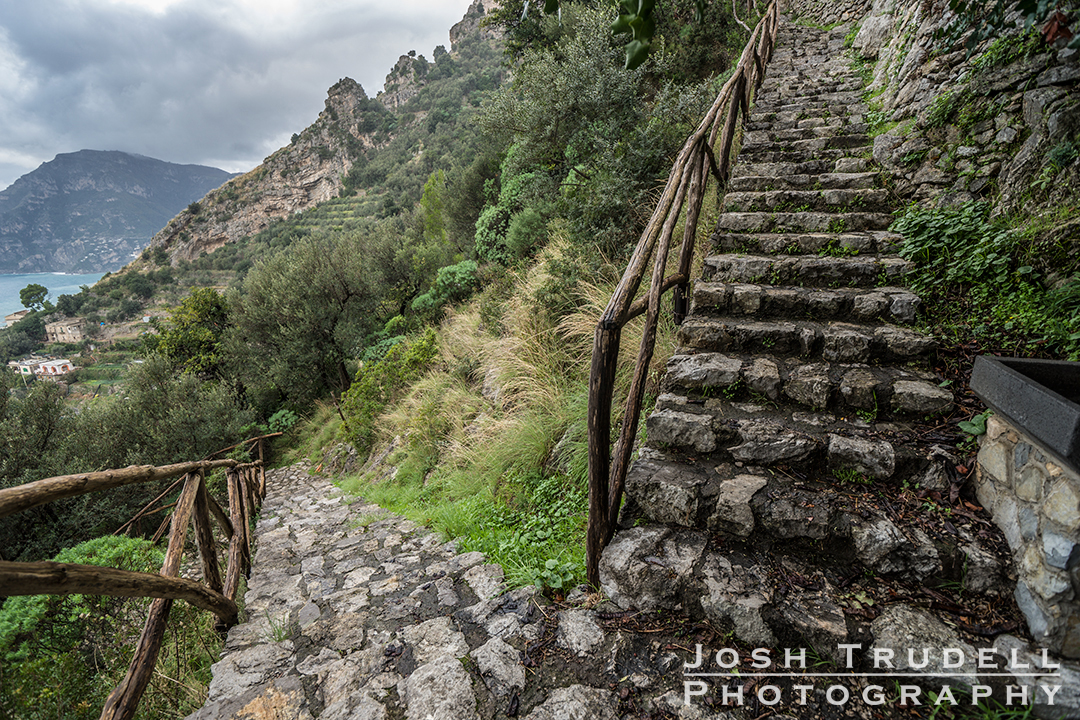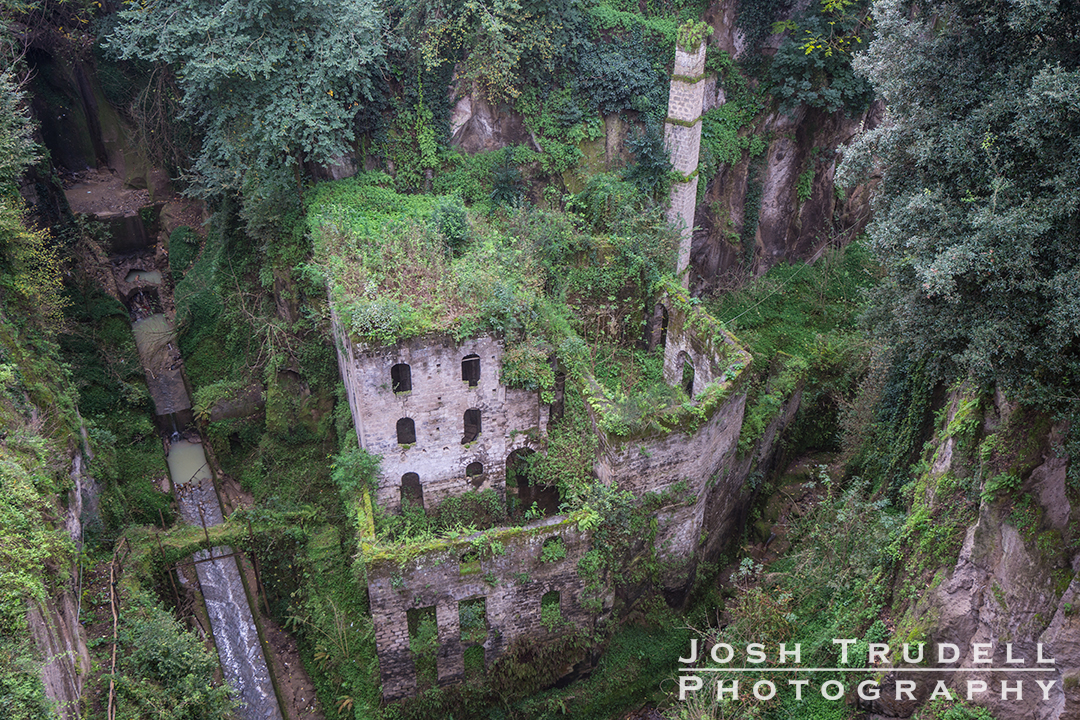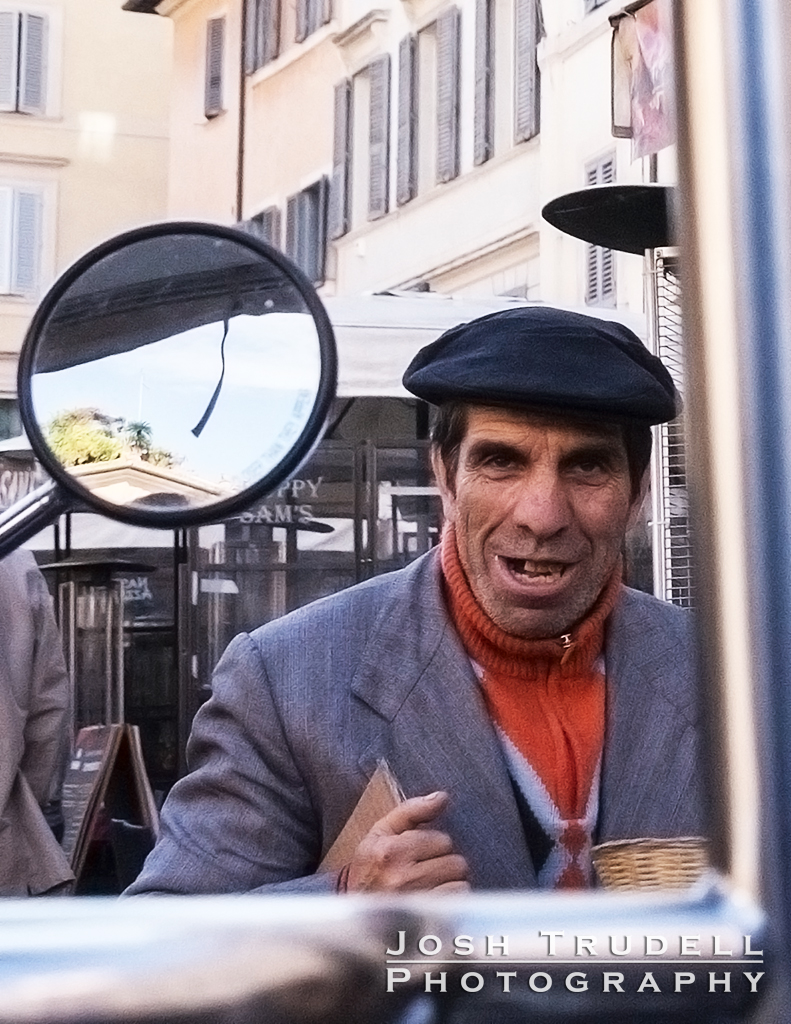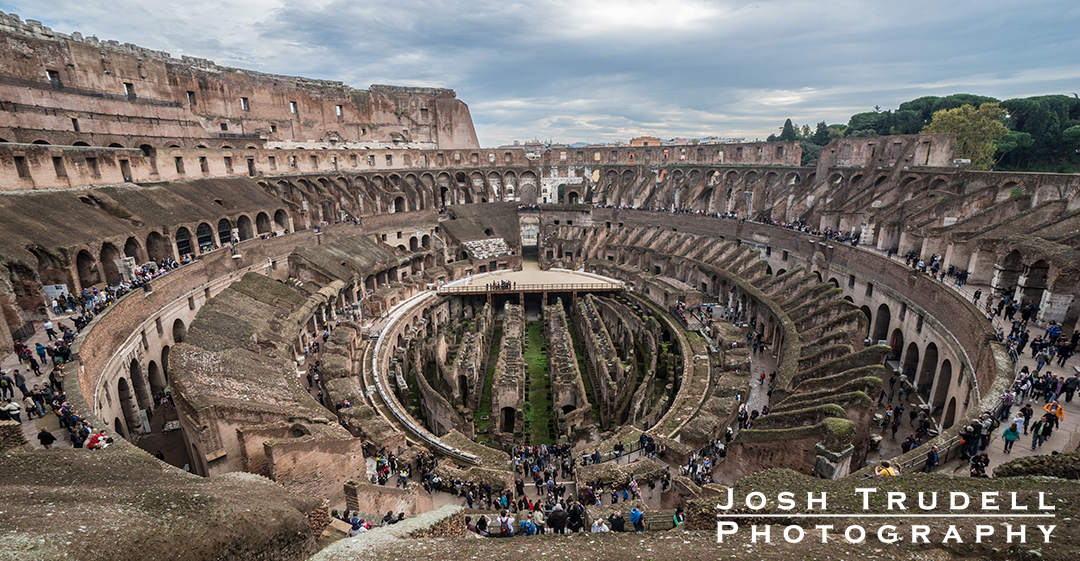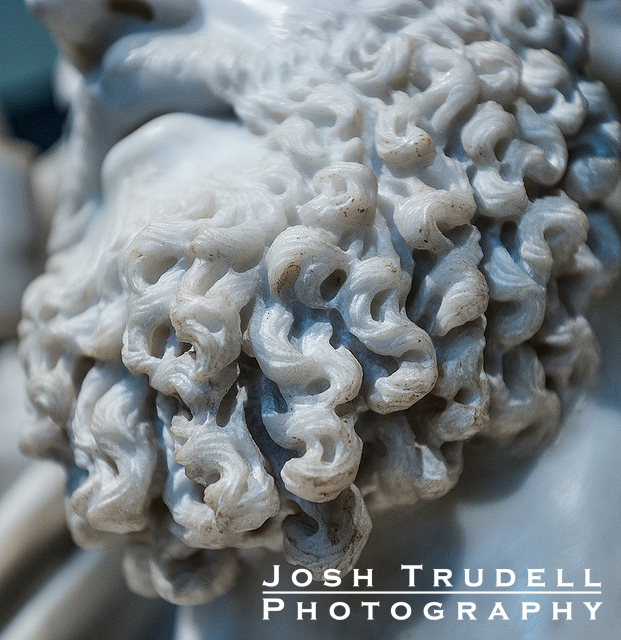Emptying the Italy notebook...
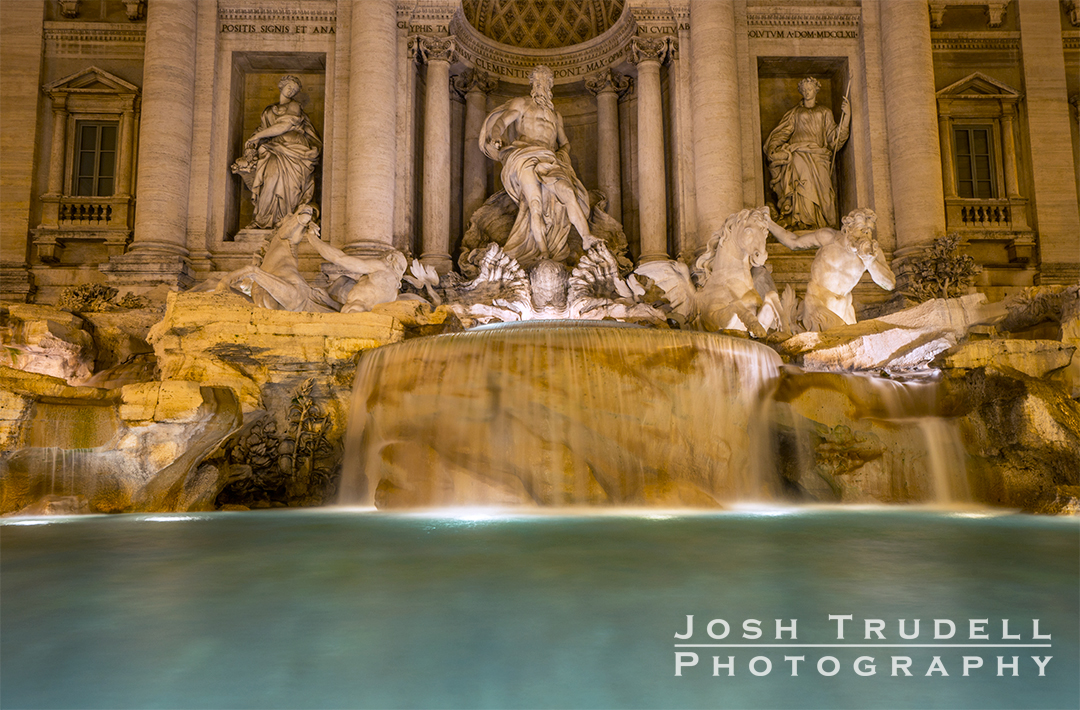 Shooting: I had initially planned to rent two lenses for this trip – a big telephoto and a wide-angle. In an effort to keep the budget under control, however, I only rented one – a 16-35 2.8 Zeiss wide-angle. I’ve used this lens before and been very happy with it, and it proved its worth again.
Shooting: I had initially planned to rent two lenses for this trip – a big telephoto and a wide-angle. In an effort to keep the budget under control, however, I only rented one – a 16-35 2.8 Zeiss wide-angle. I’ve used this lens before and been very happy with it, and it proved its worth again.
Having a good wide angle for the narrow streets (and canals) of the old cities and for the vistas from the Pathway of the Gods trail made it the best choice. I don’t think I would have pulled out a big zoom more than once or twice if it had been in my bag.
No pictures, please: The guards are STRICT about pictures in the Sistine Chapel, constantly letting people have it (of course, these people are trying to be sneaky with their cell phones, too.)
That was the only place in the Apostolic Palace (or anywhere else) that I saw the photo guards come down hard, though – virtually everywhere else was very receptive. If you ask the waiters, you can often get some pictures of the cooks working in the kitchen, which can make for some fun shots.
Food in Venice: Small bar/cafés are popular, and it's easy to get a quick sandwich to go, put it in a backpack and have it later. Pizza by the slice is also a popular snack. Take advantage of the small to-go cafes - they are much cheaper than any restaurant.
The coolest single moment: Walking into St. Peter’s Basilica. Just a few steps in, you can stand where Charlemagne was crowned head of the Holy Roman Empire. Turn right, and there's Michelangelo's Pieta.
Italy: Day 12
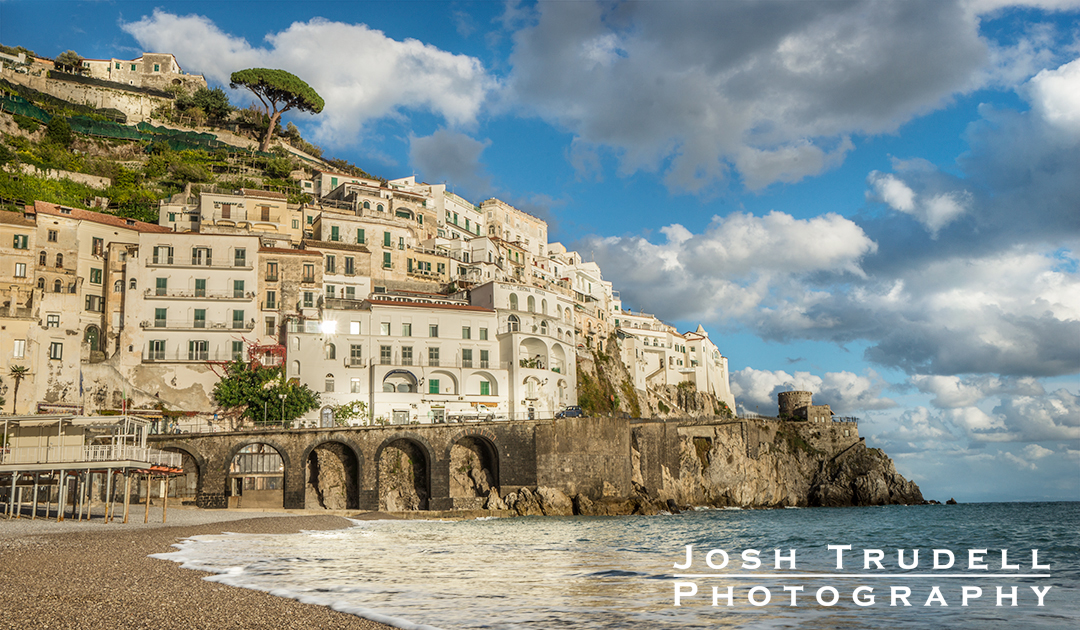 I had a mission on our trip to Italy.
I had a mission on our trip to Italy.
For years I had been seeing beautiful images of the Amalfi coast lit up by the evening sun, and I was determined to get one of my own.
After our hike across the Pathway of the Gods, we were ready for a relatively quiet day, so we took the bus from our hotel (after another fabulous Luigi breakfast) to Ravello.
Ravello, nestled between the coast town of Amalfi and the mountains, has a road to it that makes the narrow and winding coast road look like the Autobahn. It winds up the side of the cliffs on hairpin turns, past gardens cut into the hillside, before reaching a brief flat shelf in the rock.
Walking from one side of town to the other meant crossing the shelf, from views of the Med on one side to views of the rising hills on the other.
The shops there are filled with red coral jewelry, made from the offshore coral beds. The necklaces, earrings and brooches were beautiful, but pricy. Wandering through town, we found the Villa Rufulo – a huge building/park with beautiful flower gardens overlooking the Mediterranean.
Hustling back down the hillside, we made it to the waterfront just as the sun began to edge downward, lighting up the hillside buildings. It’s a little touristy around the waterfront, but the views made it worthwhile.
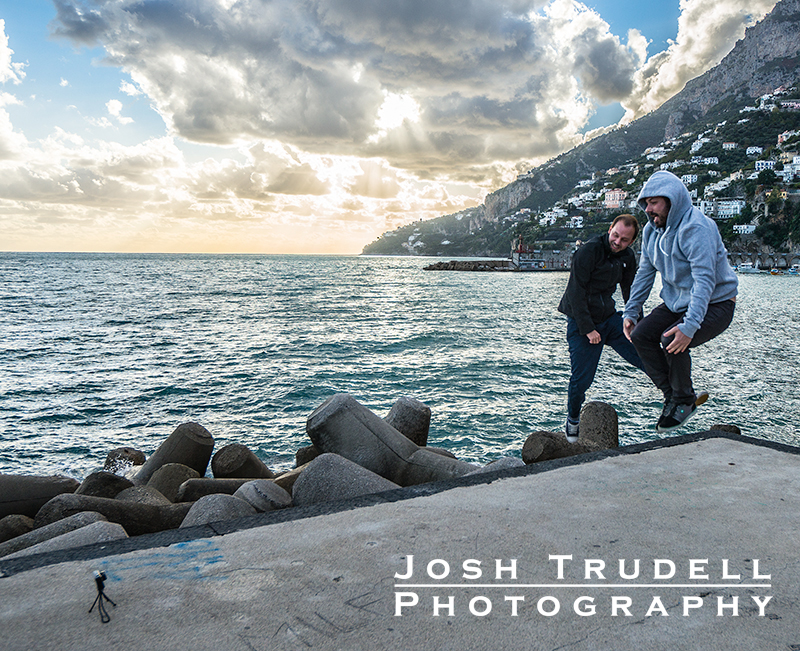 I ran out onto a pier stretching into the water, where I took a couple of panoramas – plus these gents – but wasn’t really capturing the look I wanted.
I ran out onto a pier stretching into the water, where I took a couple of panoramas – plus these gents – but wasn’t really capturing the look I wanted.
Back on the beach, however, the water, light and waves came together for one of my favorite photos from the trip.
It was a great capper as our last full day in Italy – the next day, we caught an early car and train for Rome in the pouring rain (the only day it rained), and began our journey home.
Italy, Day 11
They go up…and up…and up.
Rousing ourselves, we fueled up with another wonderful breakfast from Luigi’s kitchen and made our way to the center of Praiano, where we began climbing the steps up to the Sentiero Degli Dei – the Pathway of the Gods.
The trail runs from Bomerano to Positano – starting from Praiano, we were roughly in the middle. If we had taken the bus to Bomerano to start, we would have had an easier starting point and walked longer, but we opted for the many, many stairs – at least 1,900, by some accounts - up to the trail from the Praiano city center.
If every Stairmaster has these views, they would be a lot more popular. Looking up and down the coast, we could see for miles – clouds swarming over a mountain to the north, waves crashing on the coastline, sunlit seaside villages to the south.
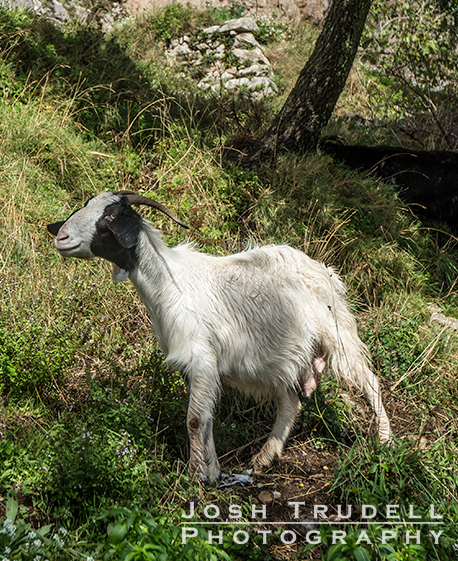 If you have an issue with heights or vertigo, this hike could be a challenge. The trail isn’t much more than a goat path – with actual goats – in spots. The four-legged friends (with an occasional shepherd) hung around the trail, munching on grass as we passed by.
If you have an issue with heights or vertigo, this hike could be a challenge. The trail isn’t much more than a goat path – with actual goats – in spots. The four-legged friends (with an occasional shepherd) hung around the trail, munching on grass as we passed by.
Able to look straight down in spots, we could see cars winding along the twisty coastal road far below. There are occasionally wooden rails in place, but more often not.
The trail winds past a couple of monasteries in mixed repair – one seemed to be open, while another was shuttered. Most signs of man were smaller, though, especially looking up the hills – the ruins of a stone house on a high meadow, or a trailside shrine built into a small cave.
As we walked, the wind and rain caught up to us briefly, but luckily not long enough to be soaking or dangerous.
By the time we reached Positano, our feet were sore from the rocky hike. The 1,600 steps from the trail down to the road, while wider and easier than the hike up, were still challenging. We were happy to call Luigi (which he told us to do before we left) and he came to pick us up.
Sore feet or not, if someone asks you to hike the Pathway of the Gods…you say yes.
Italy, Days 9-10
 Every stop on a trip could start like this.
Every stop on a trip could start like this.
After being welcomed to our hotel, our host pours us glasses of cool limoncello and offers us fresh, homemade, incredibly good midafternoon pastry/desserts.
After most of a day’s train and car ride, we made it to our final stop – the Amalfi coast. Specifically, Pensione Pellegrino in the town of Praiano.
Luigi Rispoli, our host, welcomed us warmly, to say the least, helping us with our bags, offering some limoncello and a midafternoon snack. From our ocean front balcony, we could see the water crashing into the rocks on the coastline.
This is a good example of the benefits of traveling during “shoulder season” – the prices were much more reasonable than they might be during high season.
Since it was so late in the season – Luigi told us we were the last customers of the year – the kitchen at the inn wasn’t fully operational for dinner. He drove us into town for a late dinner and picked us up when we were done –one of the many above-and-beyond services he offered while we were there.
As we had prepared for this trip, I had seen those click-friendly slideshows of the most beautiful abandoned places in the world – one of which is in the Valley of the Mills in Sorrento, an hour-long bus ride from where we were staying.
Down in the overgrown chasm, vines and branches wrapped around the stones of the old flour mill and sawmill, almost completely hiding them.
I could have spent hours exploring this, but eventually lunch became a pressing issue, and we headed out to the waterfront for lunch.
Stone buttresses that have been holding up this part of the coast for centuries lined the shore from our vantage point on a floating restaurant.
Content to window-shop among Sorrento’s many shops and take it easy, we relaxed before our big plans for the next day – hiking the Pathway of the Gods.
Italy, Day 8
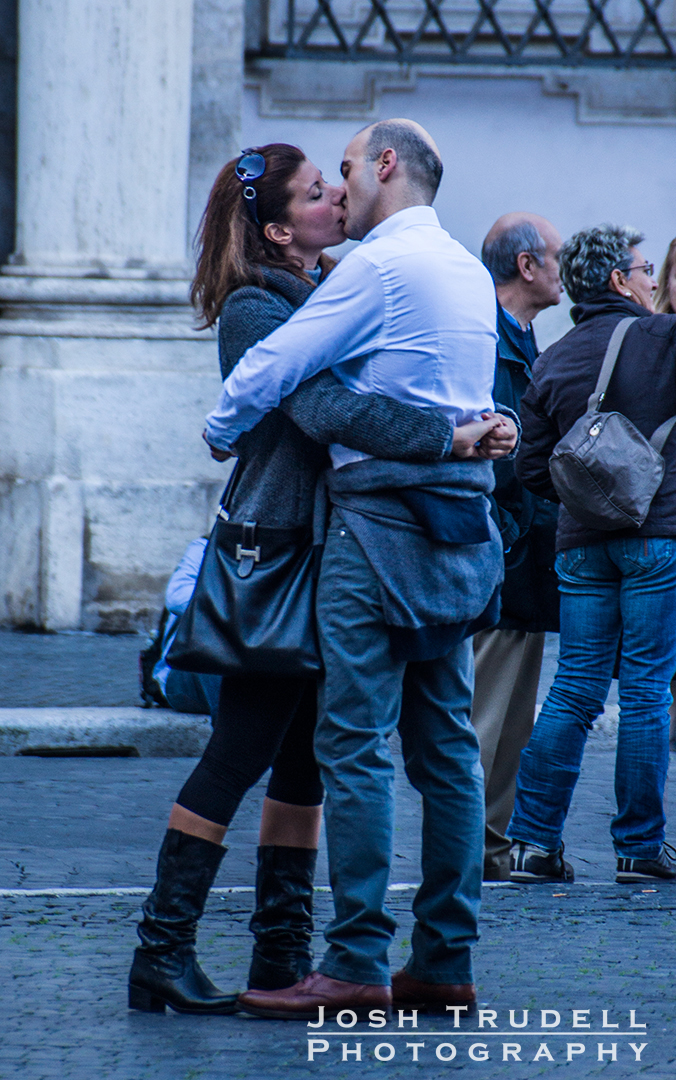 Our British friends from Venice had recommended a tour guide to take us to some of the secret spots around Rome, so we got in touch with Fabrizzio and spent most of the morning being driven around the city.
Our British friends from Venice had recommended a tour guide to take us to some of the secret spots around Rome, so we got in touch with Fabrizzio and spent most of the morning being driven around the city.
One of the sites we found was a rather dull looking parking lot, sandwiched between several apartment buildings. It didn’t look like much, but it’s the site of one of the most famous murders in history.
This is where Pompey’s Theater was, Fabrizzio tells us. This is where Julius Caesar was killed.
With our minds a trifle blown, we continued on, finding spots that we probably wouldn’t have reached after four days of beating our feet against the slate sidewalks. We had stocked up on comfortable shoes and socks, but even with them, our feet were worn down.
I indulged in some guerrilla shooting as we rolled along in Fabrizzio's open air cart - perching the camera on my knee and taking pictures as we drove by. I've occasionally done this in the past - not in an attempt to embarrass anyone, but to try and capture people how they really are, without posing.
We ended at the church of St. Ignatius, a beautiful church somewhat off the usual tourist tracks. Having Fabrizio with us was a benefit much like our Colosseum guide – a Rome resident with their own perspective on the glories around them.
After a siesta, we went back to Castel Sant’Angelo and I started my usual trip ritual of night photography. Every time we visit a city, I try to carve out at least one evening for night photography, and Rome is a heavenly spot for it.
Despite the darkening skies, a boisterous game of soccer was taking place in what would have been a moat around the castle. The building, once the largest in Rome, is the tomb of Emperor Hadrian and his family, among other leaders.
After photographing the castle, we went back to the Colosseum. It is photographed by everyone who visits Rome, but I had to take a shot at it. We were lucky enough to be there on the night of the full moon, and my favorite shot of the trip is this one:
The Colosseum was under construction, but the moon peeking through the arches really got to me.
It is worth noting that the light vendors around the Pantheon repeatedly frigged up some shots, but that seems to happen near every major landmark in a city these days.
Italy: Day 7
I really wanted to say it.
But I didn’t say it.
Standing on the floor of the Colosseum, the crowd buzzing in anticipation, the urge to bellow, “ARE YOU NOT ENTERTAINED?!?!” was very, very hard to resist.
But I managed to restrain myself, much to the relief of my traveling companion and the guide, who had probably seen that done far too many times.
The Colosseum has always been a place for “bloody spectacles,” said our guide, Camilla Verdacchi, who led us to the basement of the great stadium, where we could look up at the crowd above.
“It's really incredible how many people died here,” she said. “It was not the circus. It was not the theater — it was the amphitheater, a place for bloody spectacles.”
Verdacchi's entertaining expertise and bypassing the huge lines trying to get into Rome's biggest attraction made paying for the tour a no-brainer.
Big is no joke, either. The Colosseum's three decks once held between 50,000 and 80,000 people, which is all the more impressive for a building put together by hand with basic tools.
Sadly, much of the outer marble façade was stripped over the years by needy foremen working on buildings in other parts of the city, but there is still a grandeur surrounding the massive stadium.
Our tour led us through the Forum, including the area believed to be the cremation site of Julius Caesar, inside a nondescript low stone hut that is all that is left of a once-massive temple. Even 2,000 years later, however, the grave was graced with flowers.
After wandering through the remnants of the Forum, we ended our tour on the third deck of the Colosseum (another perk of the tour – general admission only gets you into the first and second decks). The decks were noticeably lower and wider than the steep-walled modern-day parks.
It was only a few steps from the Colosseum to the Capitoline Museums, where we browsed through huge statutes and fine art virtually undisturbed.
*Portions of this post appeared in a story I wrote about the trip to Rome for the San Antonio Express-News, titled “Plenty of spectacles, history in Rome.”
Italy: Day 6
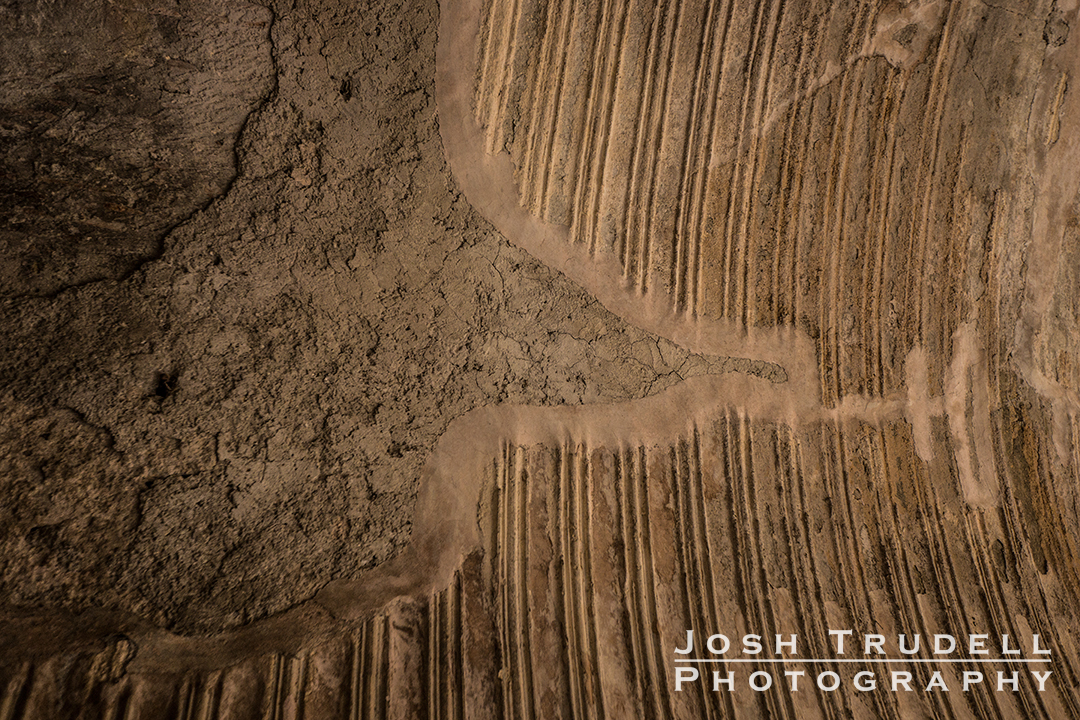 Building roads. Arguing over lunch. Putting out laundry. Leading ordinary lives – before they were buried under hundreds of feet of ash.
Building roads. Arguing over lunch. Putting out laundry. Leading ordinary lives – before they were buried under hundreds of feet of ash.
From the ruins of Pompeii, it’s hard to miss the decapitated mountain that snuffed out all those lives – Vesuvius sprawls in the distance, looking more like a group of smaller mountains rather than one massive peak since its explosion.
Taking a brief respite from Rome, we hopped the train and headed out to the ruins.
It’s a relatively easy train ride from Rome to Pompeii, but it is three hours long, with a change in Naples. The journey was worth it, though.
Despite being buried under the ashes from the eruption of Mount Vesuvius for hundreds of years, restoration and preservation efforts showed what was once a busy, prosperous city. The narrow stone streets are grooved from chariot tracks — except where they stopped as a rebuilding project was halted by the explosion.
As we came to an intersection, open buildings on opposite corners held what appeared to be benches and counters with holes that once held hot food — they appeared to be competing chariot drive-through restaurants.
The narrow streets open into the main piazza, a wide grassy area that, with the open plateau the city rests on, gives Pompeii the feel of a park.
In comparison, Herculaneum – another town destroyed by the eruption of Vesuvius - is wall-to-wall with the modern-day town of Ercolano on three sides. Laundry hanging from neighboring apartment buildings flutters over the edge of the ruins.
We initially were unsure about stopping in Herculaneum - by the time we left, Pompeii it was getting late in the afternoon, and we were hoping to stop in Naples for pizza on the way back to Rome.
But the stop for Ercolano is only a couple of stops from Pompeii, so we jumped off the train and enjoyed the short walk through the city streets. We were glad we did. The mosaics and paintings were better preserved than what we saw in Pompeii, with bright blues and reds still marking the tiles.
Far fewer people were touring the site, and more of the city was available for simple wandering.
Studies have suggested that Herculaneum's condition is better than Pompeii's because ash helped prevent buildings from collapsing, creating an airtight seal that lasted until major excavation began at the site in 1738.
As we ducked into and out of the narrow doorways, the difference between the two communities became clearer — Pompeii was more of a commercial hub, with wider streets and bigger buildings, while Herculaneum was a bedroom community.
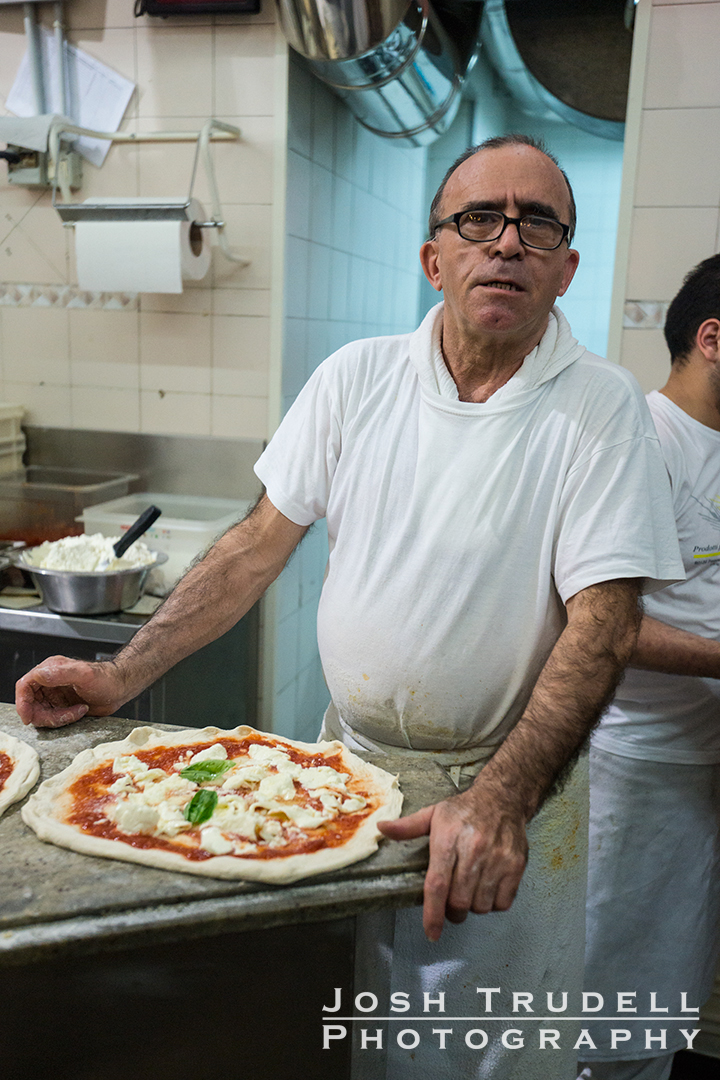 Stopping in Naples – where pizza was invented – was an adventure all by itself. With the city suffering ongoing garbage disposal issues, the piles of trash on the street corners were huge. Combined with a lack of streetlights – we walked six blocks from the train station and didn’t see a light – it was a challenge.
Stopping in Naples – where pizza was invented – was an adventure all by itself. With the city suffering ongoing garbage disposal issues, the piles of trash on the street corners were huge. Combined with a lack of streetlights – we walked six blocks from the train station and didn’t see a light – it was a challenge.
The pizza, however, was excellent. Da Pellone only serves pizza – huge slabs of fresh crust with cheese and sauce in true Neapolitan style, and it was fantastic.
The cooks were kind enough to let me shoot a few frames of them cooking, too, which was a real treat.
*Portions of this post appeared in a story I wrote about the trip to Pompeii for the San Antonio Express-News, titled “Under the Ash Lay a Prosperous Pompeii.”
Italy, Day 5
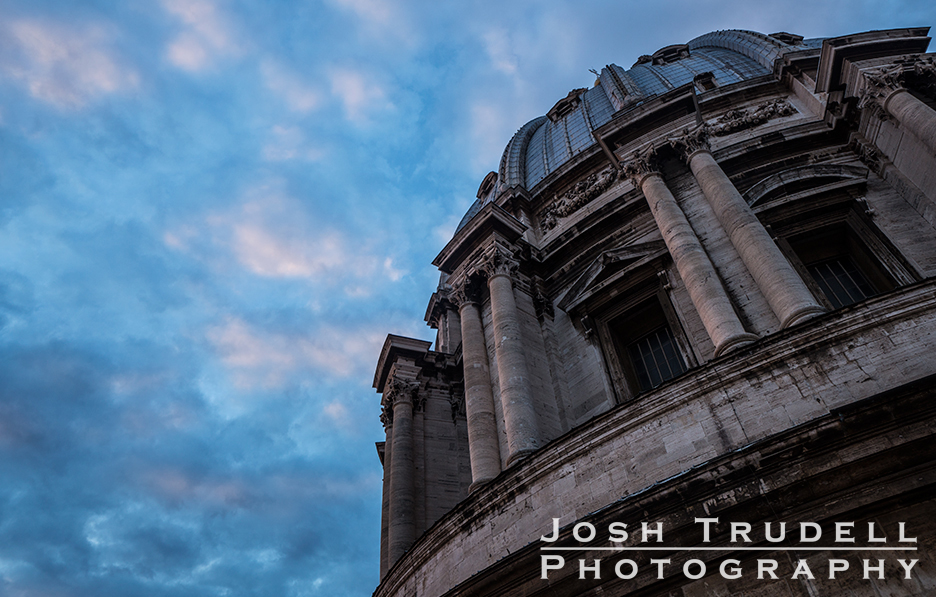 Our second day in Rome opened with wandering through the Campo Dei Fiori – Rome’s oldest open-air marketplace. The market is fun to wander, with everything from clothes to spices available for purchase.
Our second day in Rome opened with wandering through the Campo Dei Fiori – Rome’s oldest open-air marketplace. The market is fun to wander, with everything from clothes to spices available for purchase.
As a photographer, I found I preferred the hands-on activity of the fishermen at the Rialto Market in Venice to the relatively inactive sellers at the market in Rome, but there were plenty of fun shots to be had.
After walking through the various areas of clothes, food and flowers, we followed some small signs a couple of blocks toward the Pantheon, finally emerging in a large square where the ancient temple sat surrounded by modern apartment buildings.
Stepping inside the 1900-year-old building was a instant transport back to the days of ancient Rome, with the huge dome arcing overhead with one bright sunbeam coming through the center.
Nearby Piazza Navona was a sight to behold as well. The long, football-field shaped rectangle was once the home of chariot races. Now, artists tried to capture those scenes (possibly based on Ben-Hur), or the romantics walking by the huge fountains.
The biggest stops today, however, were the Sistine Chapel and St. Peter’s Basilica.
If there was one thing I wanted to see in Italy, it was the Sistine Chapel – I’ve been seeing that famous portion of the ceiling forever. But what you’re not prepared for is the sheer scope of Michaelangelo’s brilliance – the entire ceiling is a masterpiece.
There are photographs allowed everywhere except the chapel, and the guards are very vigilant about policing cameras.
After seeing the chapel, we made our way up to the top of St. Peter’s Basilica, for one of the best views of the trip. It was very crowded, though – the narrow steps to the top plus the dozens of people packed in hoping to see sunset made it borderline unnerving.
Once the sun went down and we escaped the masses, we had dinner at Spirito de Vino, a well-reviewed place on TripAdvisor. The meal earned the restaurant’s notices, as did the ancient wine cellar, which is allegedly older than the Colosseum.
Italy: Day 1
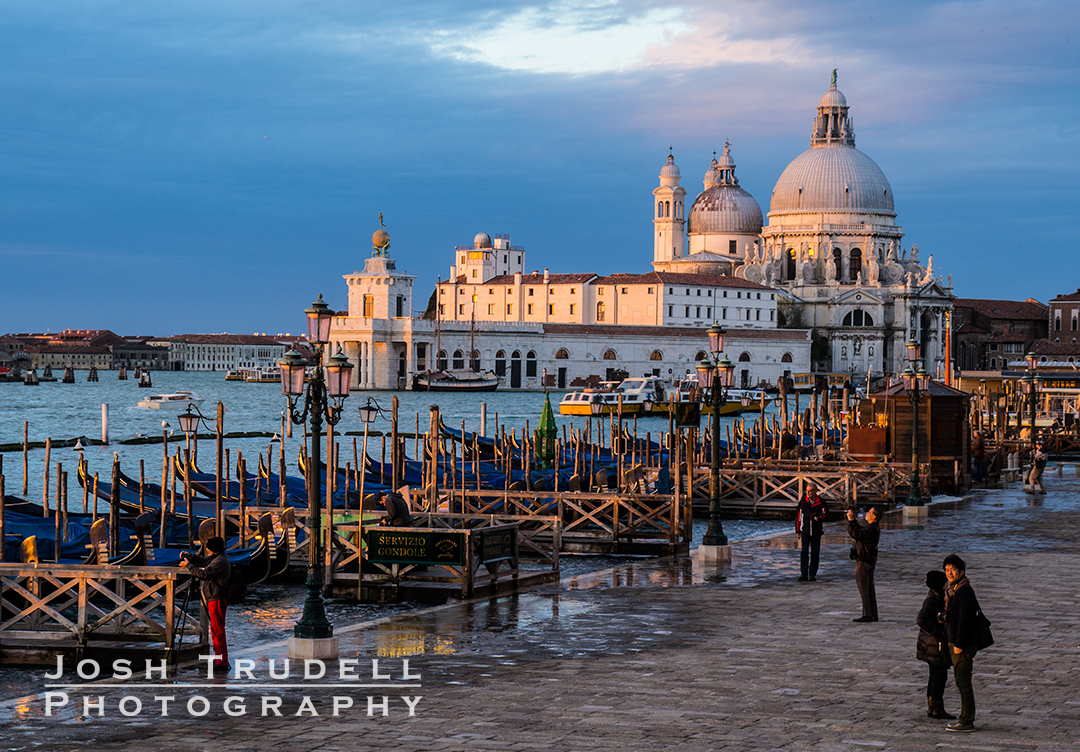 Starting a vacation with a headlong sprint isn’t my idea of a good time.
Starting a vacation with a headlong sprint isn’t my idea of a good time.
But there we were, ducking, bobbing and weaving through Heathrow Airport, trying to catch the last connection for a trip we had been planning since the flight back from our last trip to Europe, four years ago.
We were Italy-bound for the first time – if we could just make it to the gate on time.
I’m sad to say – this oxygen-deprivation exercise was my fault.
Our travels started smoothly, including a splurge on a first-class upgrade between Dallas and Boston on American Airlines. The second leg, on British Airways, was less comfortable – six hours in a tiny middle seat were not fun.
In the midst of trying to juggle Kindle, drinks, carry-on and other assorted travel paraphernalia, I put my passport in the seat pocket in front of me.
Two words: Rookie mistake.
After 18 hours of travel, we staggered out of the plane and up to the first security checkpoint, only to find that a certain sleep-deprived writer/photographer had left his passport on the plane.
While I can’t say much for the accommodations, the customer service from British Airways was excellent. Within 20 minutes, I had my passport in my hand. The next issue, however, was getting from our gate, which I’m convinced was on the far end of Scotland, to our connecting flight.
Twenty minutes of sprinting mixed with trying-desperately-to-be-patient-but-dear-god-can-this-security-line-move-faster patience, we charged into our gate area and down the ramp…
Where an airline worker held up a hand, begging for calm. “It’s okay, you made it,” she said, as we walked into the plane…and found it completely empty.
We had sprinted past first class check-in, business class check-in, soldiers, mothers…the whole lot. We made it to our seats and collapsed in laughter, as everyone else started filing on board and looking at us strangely.
Still chuckling three hours later, we landed in Venice. After checking into our hotel – Ca’Dogaressa, a very nice space that was convenient to local transportation and sights – we staggered around for a bit, but the very long travel day – including a nasty head cold for my traveling companion - landed on us hard and we passed out early.
How my feet survived our European vacation, and other thoughts
Four quick takeaways from a fantastic trip to Italy:NO BLISTERS: I can’t explain how much of an improvement it was on the vacation experience to not have any blisters on my feet. When we went to London and Paris four years ago, my feet were red and raw by the end of the second day.
Two weeks of pounding our feet on the cobblestones and slate of Venice, Rome and the little towns on the Amalfi Coast, and nothing this time.
I wore sock liners every day (except flying days) and heavy Thorlo hiking socks over fairly new (less than a month old) Teva low-cut hiking boots. Thorlos are expensive, but worth their weight in gold. Highly recommended.
CROSSING THE STREET: Our vacation experience went up 10 points by crossing Via Veneto in Rome – but it completely leveled up in Naples.
We didn’t see any streetlights in a six-block walk around the train station in Naples. The resulting chaos was beyond epic. Taking our lives in our hands, we walked out and waited for them to stop – amazingly, they did.
Luckily, the pizza we had at Da Pellone More than made up for it. If you're going to eat pizza, eat it where they invented pizza.
PHOTOGRAPHING THE ICONS: Some of my favorite shots are iconic buildings at night. With stops in Rome and Venice, there were more than a few opportunities for me to try cool night shots.
However, the hustlers shilling their colored light gizmos tend to wander in front of the camera during the long exposures, which can result in some interesting effects, but more often result in annoying crap and lots of time in Photoshop, if not a junked image.
However, they will usually – not always – get out of the way once they see what you are doing.
THE BEST VIEWS: This was a tough call. We had a great view from the top of St. Peter’s Basilica, but it was very crowded. Castel Sant’Angelo was less crowded, had a great view and we got a better sunset. Win.
